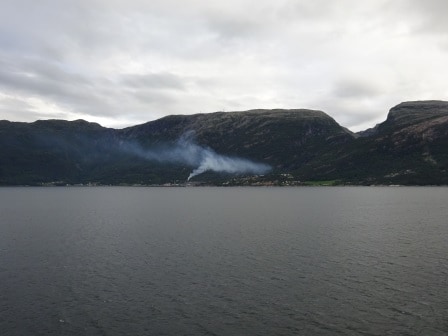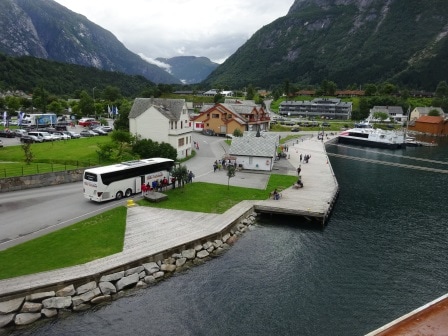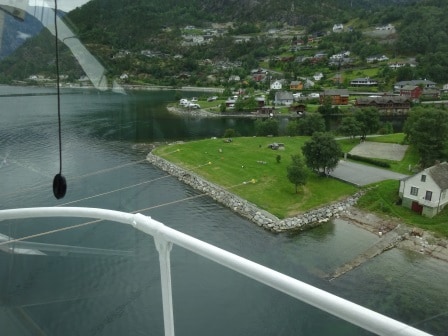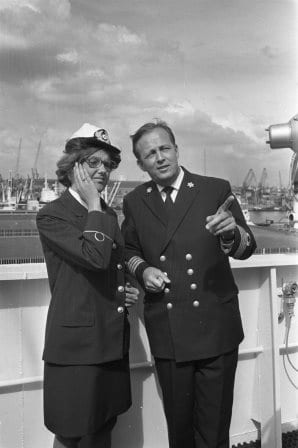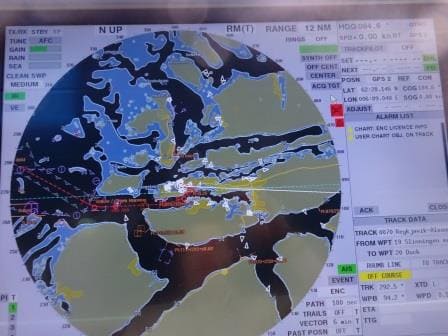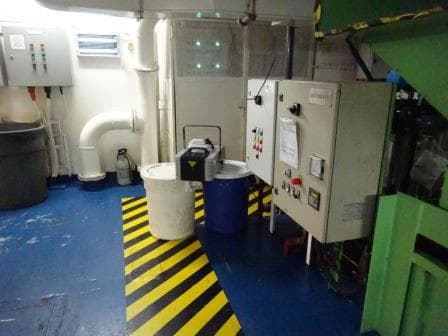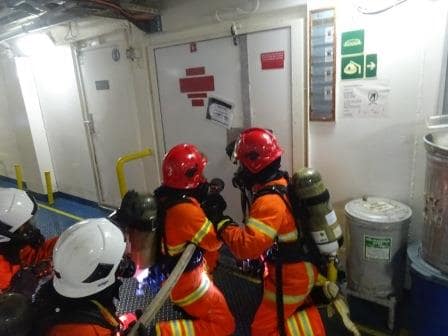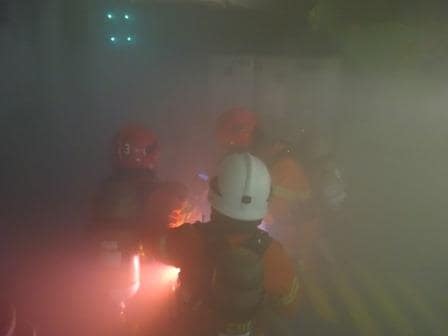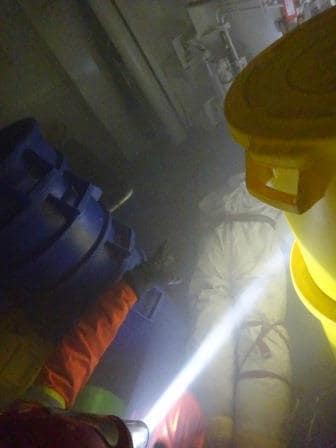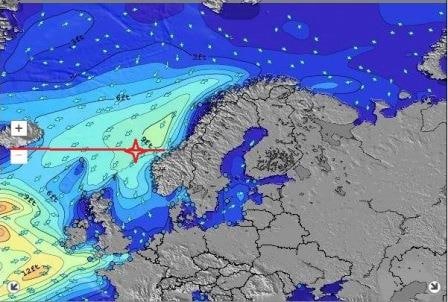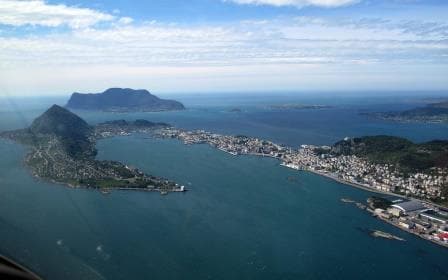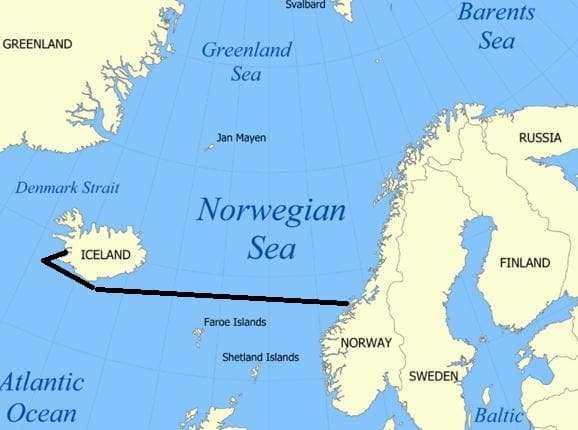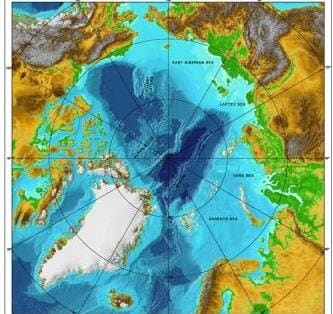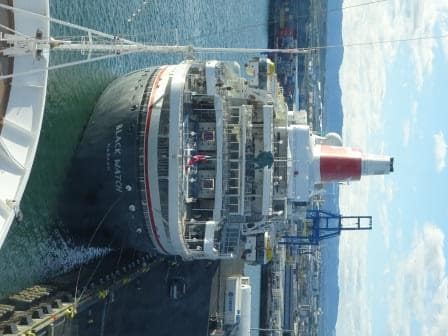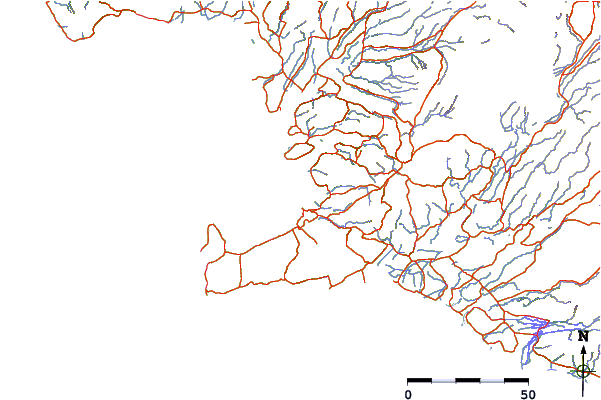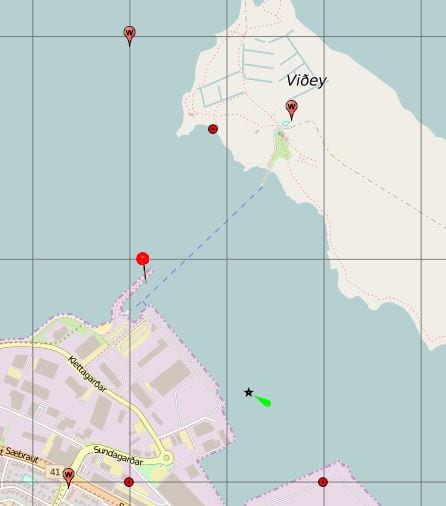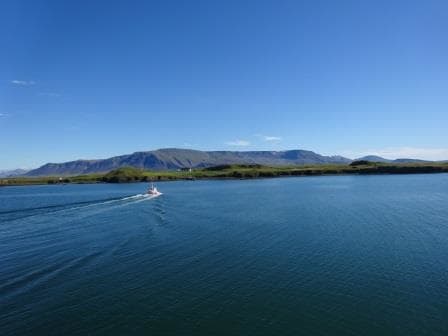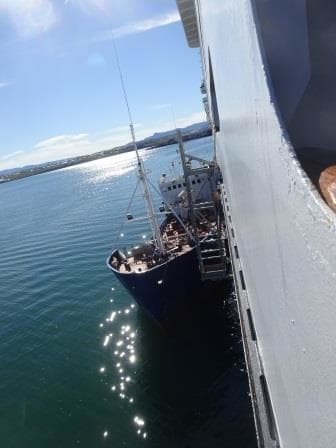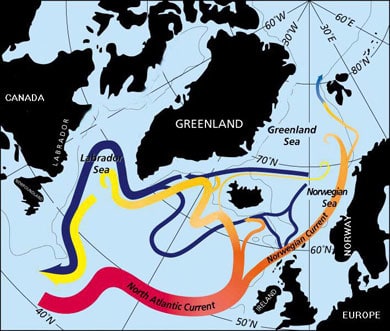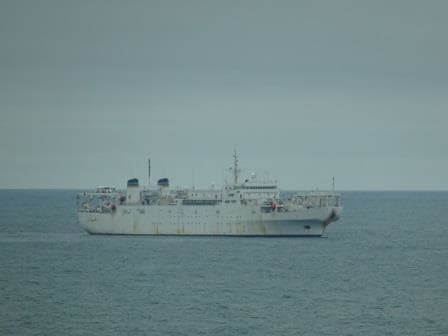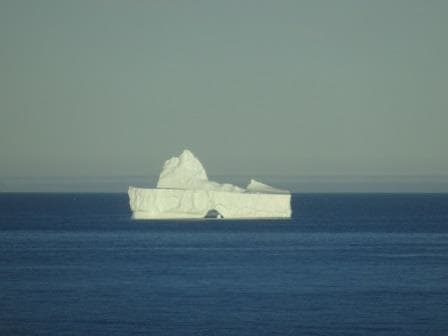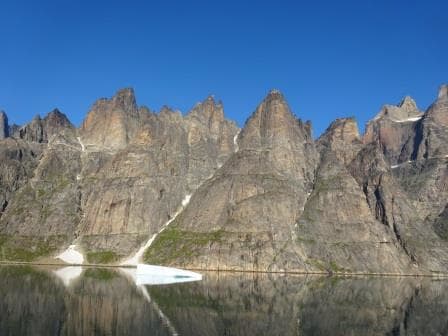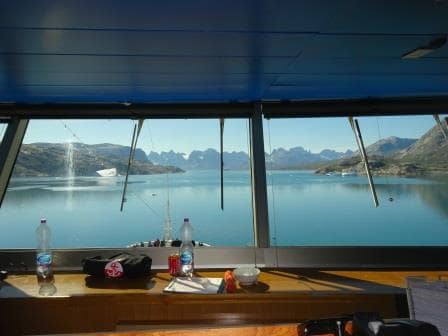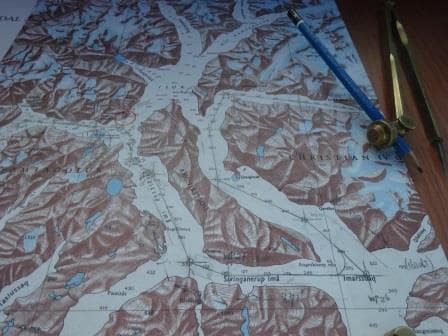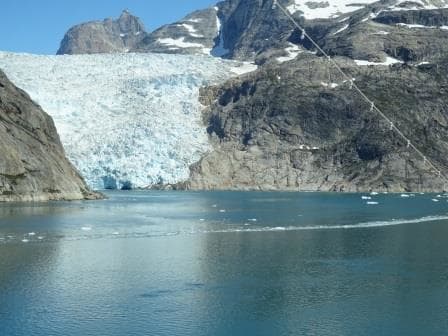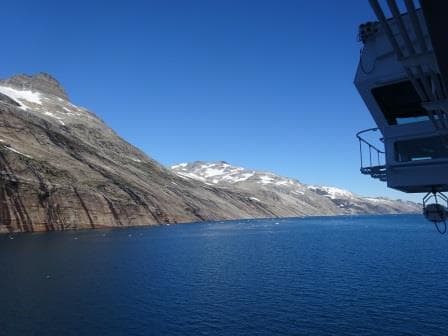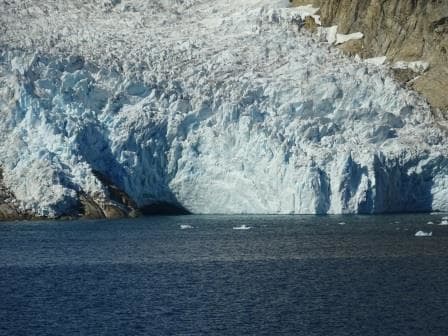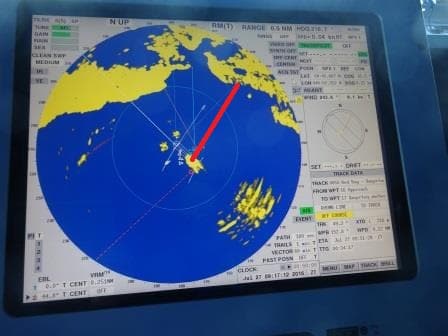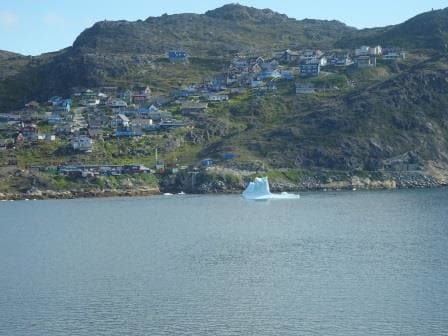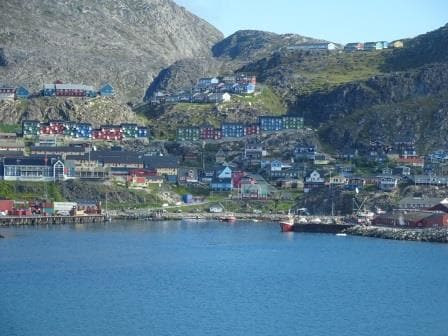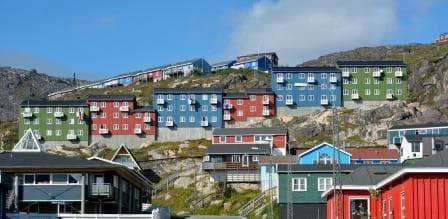Just after midnight we were back in open waters again and shortly after we disembarked the pilot. Then it was setting a southerly course towards the next port of call Rotterdam. The weather is a mixture of overcast with dark and light clouds and blue skies peeping through on occasion and the good thing is that the very strong North Westerly wind is with us and is cancelled out by the ships speed. Thus the relative wind on deck is almost zero. Glad we are not going the other way. On occasion we see oil rigs on our starboard side and we passed one quite close this morning and could see a helicopter landing. Either bringing supplies or being involved in a crew exchange.
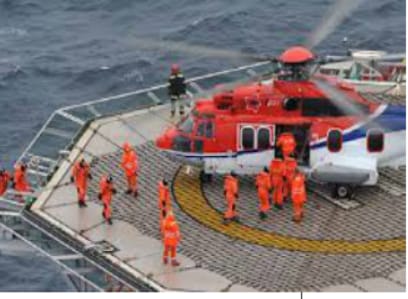
Crew change on an oil rig. Note the survivals suits they all have to wear (Photo courtesy: www.oilriginfo.com)
Most of the oil rigs in this area are being serviced from Bergen which became a real boom town once the Norwegian oilfields came in operation; but there are also ports on the other side such as Inverness in Scotland and Great Yarmouth in England that have become important centers to support the oil industry. If an oil rig is manned by crew that belongs to the British Isles then they can easily come over by helicopter from that way. Only now on occasion crew exchanges take place by boat. In the past this meant a hazardous climb up a ladder or using an external lift system but nowadays there are ships equipped with a crane & walkway which makes it possible to do this much safer and faster if still needed.
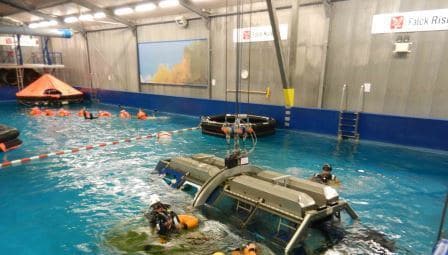
Helicopter water crash training for oil rig crew by submerging a mock up with seats into and under water. (Courtesy Falck Rotterdam)
If you are working on an oil rig, you have to go through training in the same way as all crew on a ship has to do. Additional to that, extra training is the need to be proficient in escaping from the helicopter in the water, in case one would crash. On the North Sea that on occasion still happens as here the helicopters sometimes have to fly on the margin of what is possible. This does not mean they take risks but the North Sea weather is sometimes so un-predictable that risks occur regardless. But those who were up and about this morning and outside at the right time witnessed a perfect landing with a helicopter. One of those moments that I berate myself of not having my camera in my pocket.
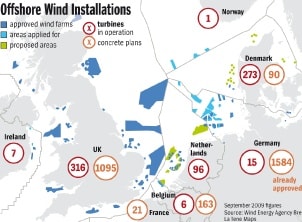
Windmill areas in the North Sea. The ms Rotterdam sailed roughly from nbr 3 to nbr 96 on this chartlet and as you can see you cannot miss them.
Apart from oil rigs which are mainly placed in the northern part of the North Sea we will see windmill parks in the southern part of the North sea, all the way down to the border with Belgium. There it stops as then the English Channel starts and there is no room anymore. With the danger of fossil energy running out countries such as England, Holland, Germany and Denmark have started to build large numbers of windmills in their territorial waters. For some countries there is the aim to, by 2020, having reduced their reliance on fossil energy by at least 20%. For that you need a lot of Windmills or Wind turbine farms are they are now called. They are built in allocated plots of sea, outside the shipping lanes but in some instances only “just outside”.
I was involved a number of years ago in the planning of one of these locations and it was interesting to follow the process which involved all stake holders. The interesting part was that the Shipping world had a good idea of what was needed to make it work but that the politicians and electricity companies did not really understand what ships did. They thought it was easy for us, just to sail a 100 miles around it all and were highly amazed that there was a link between fuel costs and the cost of a packet of cornflakes in the super market. For a country such as the UK where 95% of the goods which go in and out of the country go over sea a deviation by a ship will result in the transport price going up and thus the end cost in the supermarket. The result was quite some intense bickering about how wide the shipping lanes had to be and where they had to go. In the end the threat of collisions resulted in allocated shipping lines which worked for all parties.
The ms Rotterdam will arrive tomorrow morning at 03.00 hrs. at the pilot station and then make its way up the river. We should be docked around 07.00 hrs. Although you can hardly see that it is a river, at least the water is. But here the river Maas has been so canalized and dredged that it is called the New Waterway or Nieuwe Waterweg.
More about that tomorrow.
